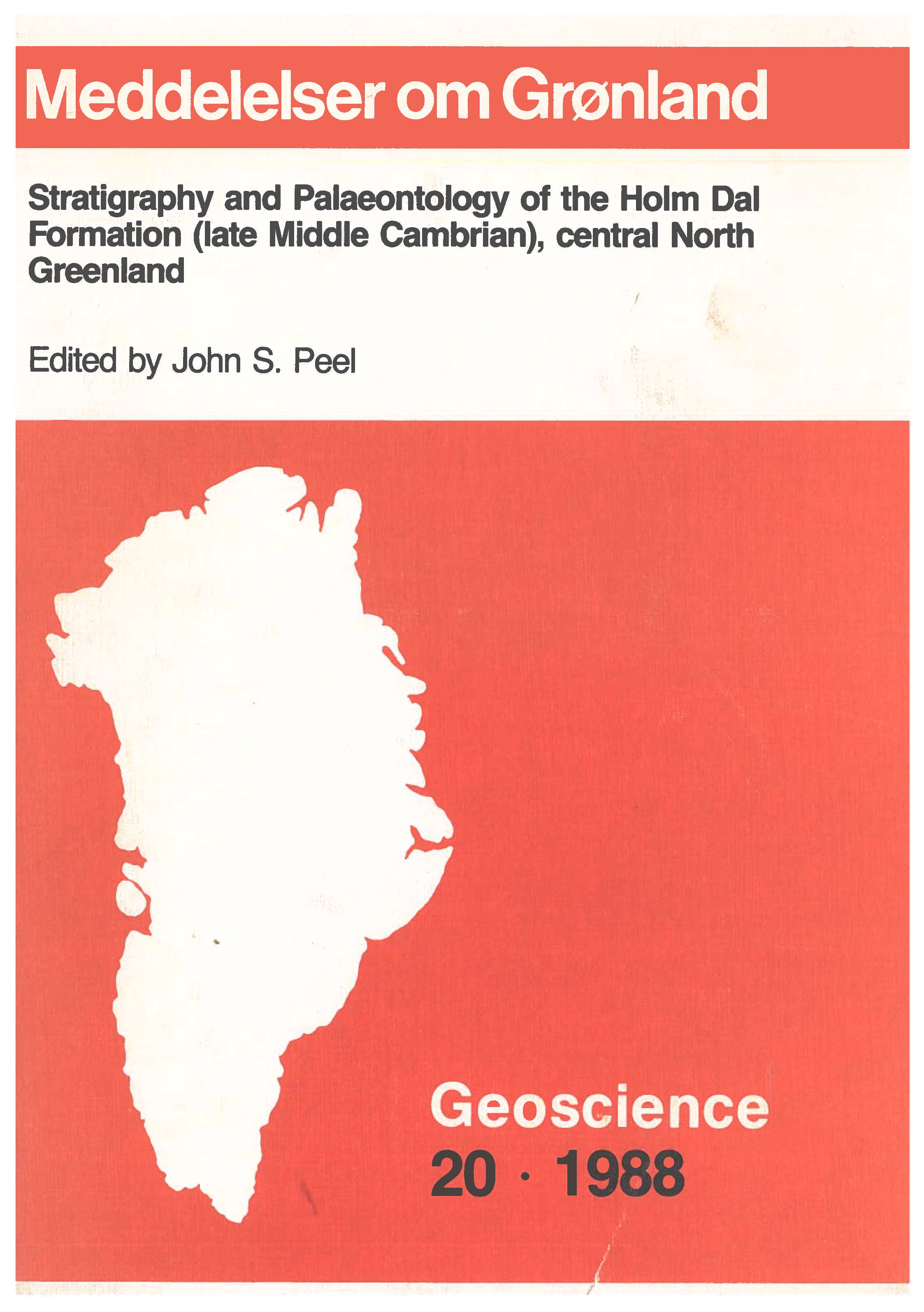Trilobite and lithofacies relationships in the Holm Land Dal Formation (late Middle Cambrian), central North Greenland
DOI:
https://doi.org/10.7146/moggeosci.v20i.139890Abstract
Multivariate techniques show a strong relationship between trilobite species and lithofacies of the Holm Dai Formation. Presence-absence data on 58 species of trilobites, including 43 polymeroids and 15 agnostoids, were analyzed. Q-mode cluster analysis produced three lithologically homogeneous groups of samples: lime grainstones from Peary Land, lime mudstones from Freuchen Land, and lime mudstones from Peary Land. Nonmetric multidimensional scaling supports the reliability of the Q-mode groups, and stepwise discriminant function analysis indicates that lithology can be discriminated using a four-variable model of Catillicephala rotunda, Hemirhodon sp., Marjumia brevifrons, and Modocia planata. R-mode cluster analysis produced four groups of species: grainstone species, Peary Land mudstone species, Freuchen Land mudstone species, and agnostoid species present in all lithofacies. The intersections of Q-mode and R-mode clusters define lithofacies-related faunal associations. These techniques also call attention to samples with unusual faunal compositions and species with unusual distributions.
The distribution of most agnostoids differs from that of most polymeroids, supporting the conclusion that agnostoids were adapted to a different mode of life from that of polymeroids. The distribution of agnostoids was probably controlled by physical and chemical factors that were not dependent on bottom sediment or conditions.
Downloads
Published
How to Cite
Issue
Section
License
Coypyright by the authors and the Commision for Scientific Research in Greenland / Danish Polar Center. No parts of the publications may be reproduced in any form without the written permission by the copyright owners.


